How To Buy The Best Electric Composter: Read This Before Spending $100s On A Countertop Food Recycler
Electric composters and countertop food recyclers offer a super-fast solution to tackling food waste – and can help create nutrient-rich compost. Choose the best model for your needs with our expert guide.
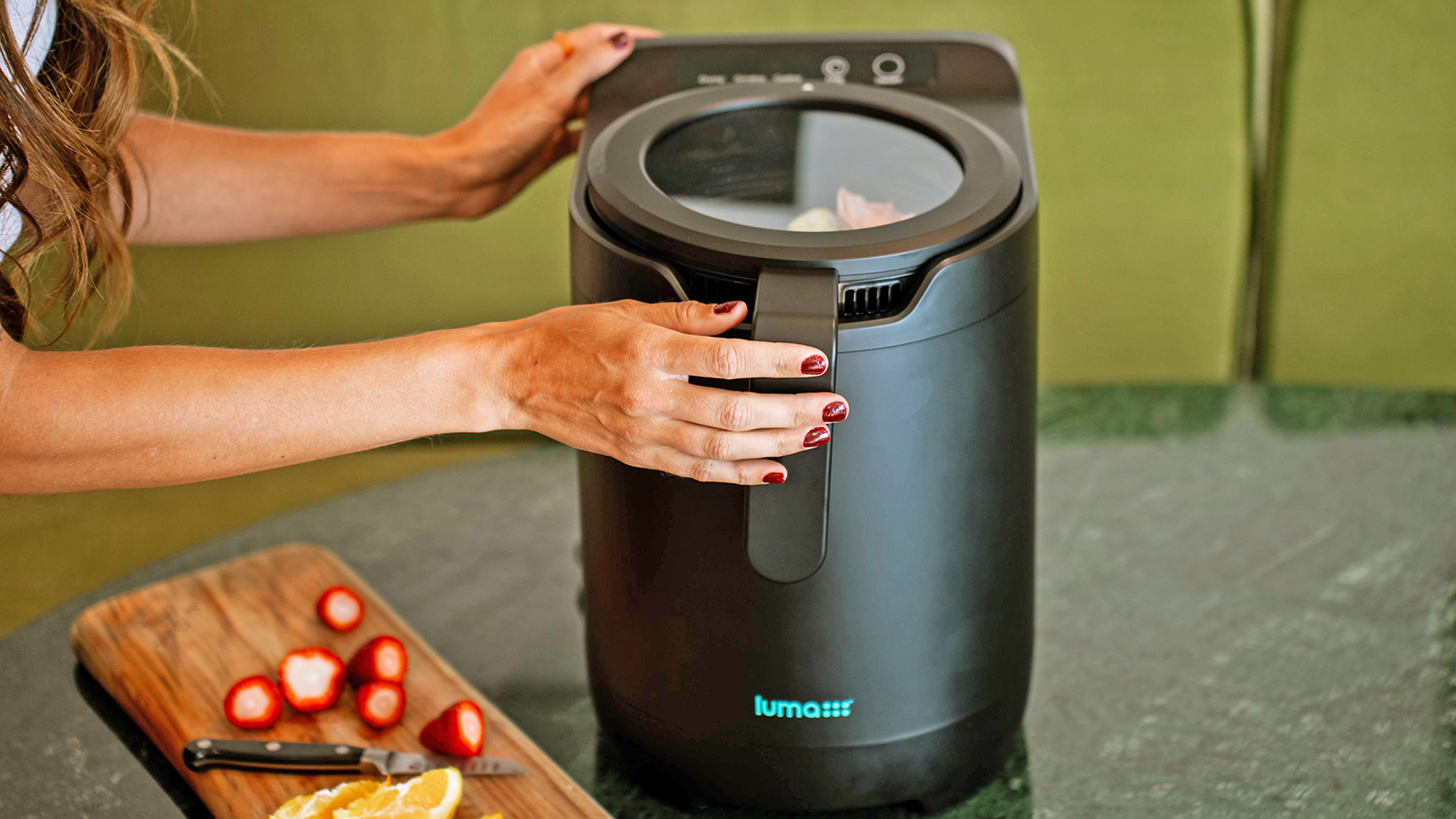
- Best Electric Composters 2024
- How to Buy the Best Electric Composter
- How Do Electric Composters Work?
- Electric Composter or Food Dehydrator?
- How Long Until You Can Use the Compost?
- Size and Capacity
- What Can You Compost?
- Carbon Filter Replacement
- Noise Levels
- Ongoing Maintenance
- Energy Cost
- Electric Composter Cost

With so many models available, choosing the best electric composter can feel overwhelming. But the right choice can significantly enhance your sustainable lifestyle, making food waste management faster, cleaner, and more convenient.
An electric composter uses heat and grinding mechanisms to break down food scraps into a crumbly material that, following a curing period, can be used as compost in the garden. This significantly reduces the time and effort required compared to traditional composting methods which can take many months.
It's an ideal option for indoor composting, where space is at a premium, but also helps the process if you're learning how to compost in your garden. However, not all models are created equal, so understanding your specific needs is essential.
This guide will help you navigate the options to find the best electric composter that fits your lifestyle and supports sustainable living.
Best Electric Composters 2024
Whether you're a seasoned composter or new to the concept, our analysis of the best electric composters will empower you to make an informed decision.
To select these composters, we researched the latest models, read real product reviews, and interviewed manufacturers where possible.

Cost: $499
Dimensions: H18.4xW13xD12 inches
Weight: 20.1 lbs
Compost capacity: Max 2.2lbs per day
Noise level: Under 28dB
Filter cost: $35 (lasts 9-12 months)
Reencle is the first electric composter that supports the bacteria required for aerobic composting. By introducing bacteria strains found naturally in compost and operating at a lower temperature to avoid destroying the cultures, the end product requires just three weeks of curing before it's plantable. Reencle takes less than 24 hours to break down most food items.
Pros
- Supports bacterial decomposition
- Compost plantable in 3 weeks
- Microbes only needed to be added once at the initial setup
- Ultra-quiet operation
- Long-lasting filter
Cons
- Need to manage the microbial culture for consistent results
- Bucket not removable

Cost: $399.99
Dimensions: H13.8xW10xD14.5 inches
Weight: 17.9lbs
Compost capacity: 2.5L
Noise level: 55dB
Filter cost: $29.99 (lasts 6-12 months)
The Luma Electric Kitchen Composter has a one-touch operation and an integrated smart sensor that adjusts cycle time based on the contents of the waste basket. A clear-view lid lets you keep an eye on the process. Luma takes 3-6 hours to break down kitchen scraps, which are then added to unplanted soil or the compost heap, to cure for about three months.
Pros
- Clear lid
- Fast operation
- Smart sensor to adjust operation time
- Dishwasher-safe bucket
- Filter lasts up to 12 months
Cons
- Does not support bacteria
- Compost not plantable for 3 months
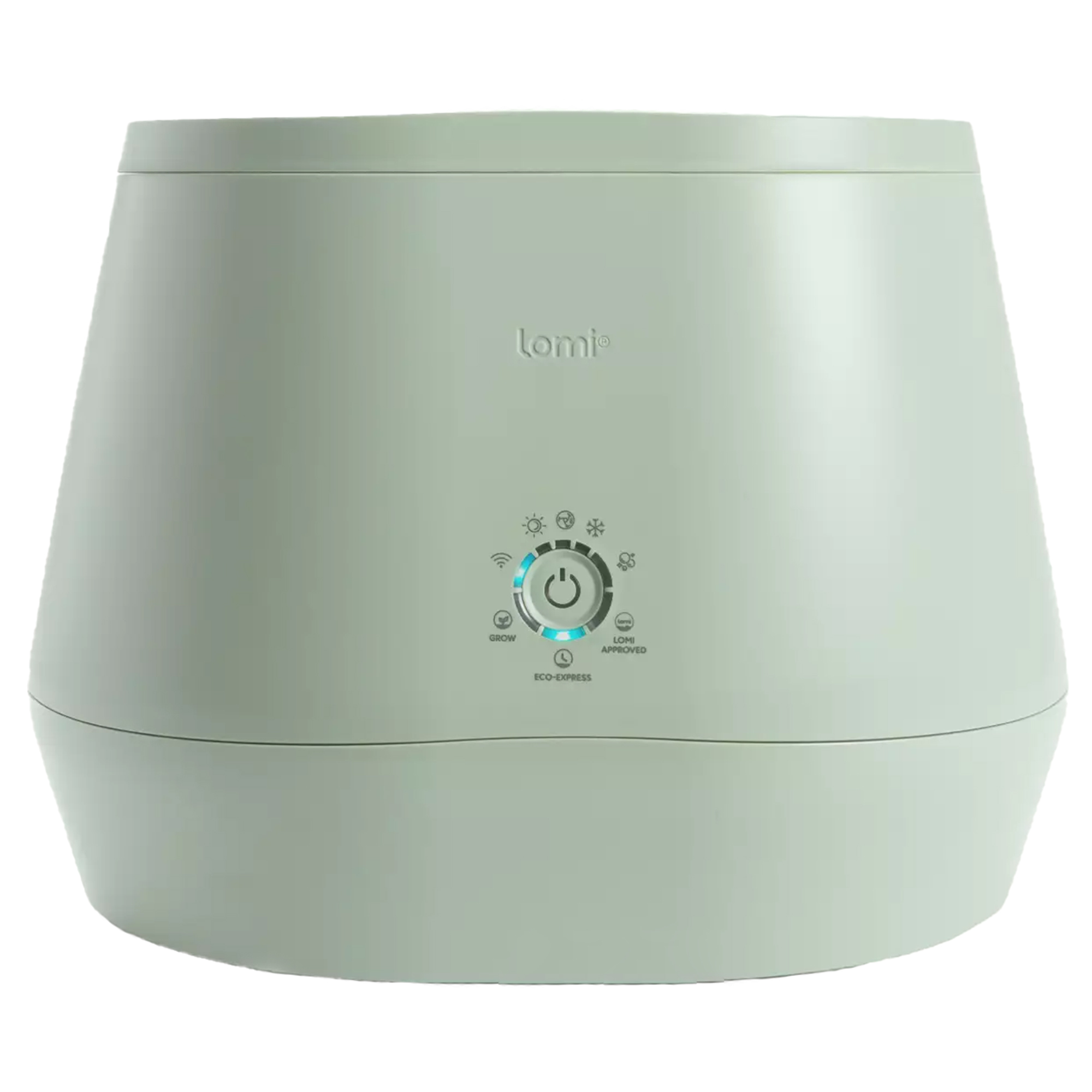
Cost: $599
Dimensions: H12xW16xD13 inches
Weight: 19lbs
Compost capacity: 3L
Noise level: Under 60dB
Filter cost: $29.99 (lasts 3 months)
Lomi 2 comes in five colors and connects to an app via WiFi, so you can monitor the composting cycle. It has a choice of operation modes: Eco Express quickly breaks down and dehydrates food waste, while Grow mode runs more slowly at a lower temperature and adds bacteria for more nutrient-rich compost. Lomi recommends mixing it with soil at a 10:1 soil-to-compost ratio before using.
Pros
- Choice of operating modes
- Good choice of colors
- Clear lid
- Dishwasher-safe drum
- Connects to app
- Includes a cleaning cycle
Cons
- Higher priced
- Filter only lasts 3 months
- Eco Express mode destroys beneficial bacteria
- Grow mode bacteria pods need to be added at every cycle, increasing the running cost
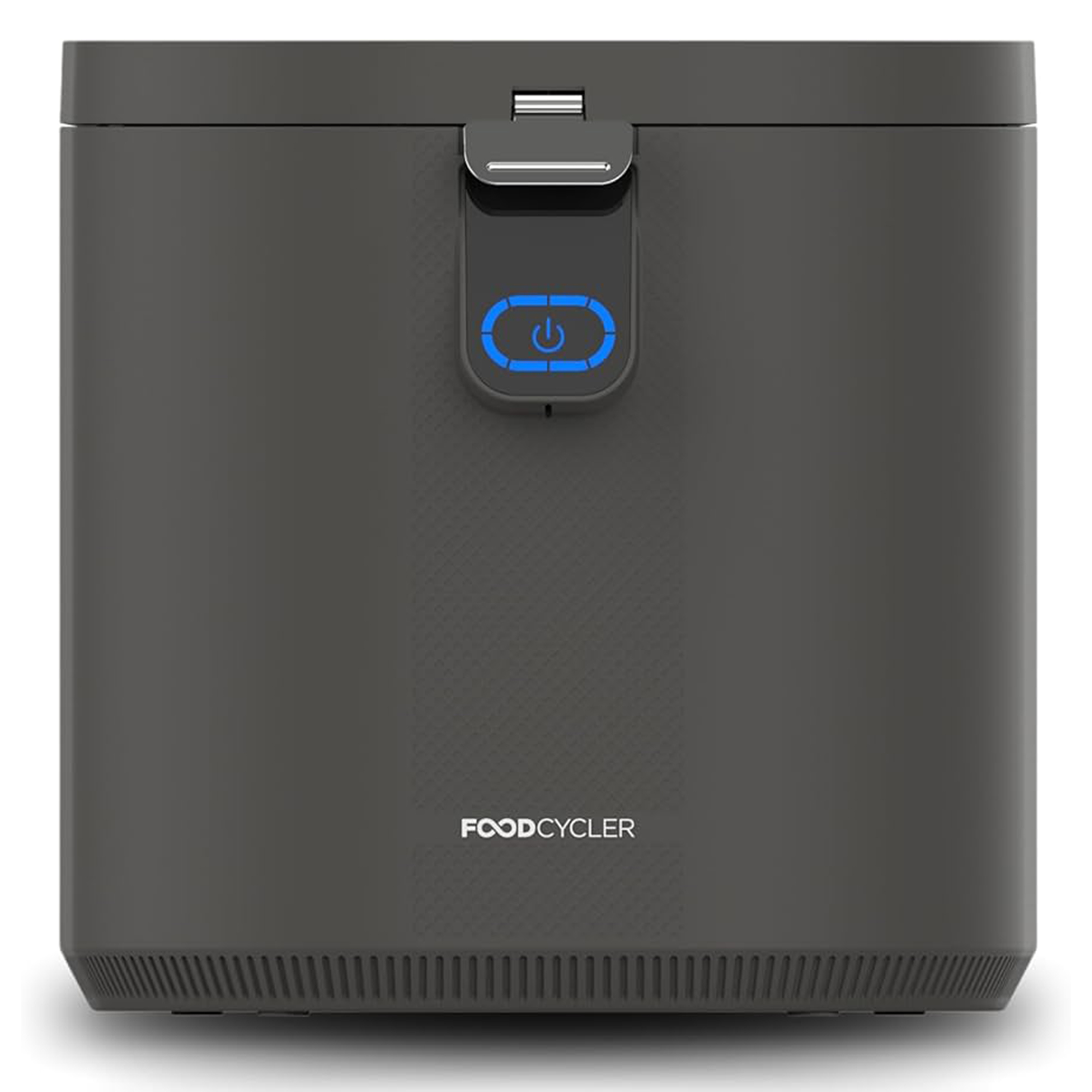
Cost: $599.95
Dimensions: H13.8xW13.8xD10.3 inches
Weight: 29lbs
Compost capacity: 5L
Noise level: Quiet
Filter cost: $29.99 for carbon refill pack (lasts 3-4 months)
FoodCycler is marketed as a compact food recycler, rather than a composter, as its focus is on breaking down food waste rather than supporting bacteria. The appliance has a simple, one-button operation and a removable bucket that can be kept in the kitchen if the appliance is stored elsewhere. Its cycle time is between 4 and 9 hours and the food grounds can be composted.
Pros
- Easy to use
- Large bucket capacity
- Dishwasher-safe bucket
- Refillable charcoal filter
- Powerful blades can handle small bones and shellfish shells
Cons
- Destroys beneficial bacteria
- Slower than other models
- Heavy
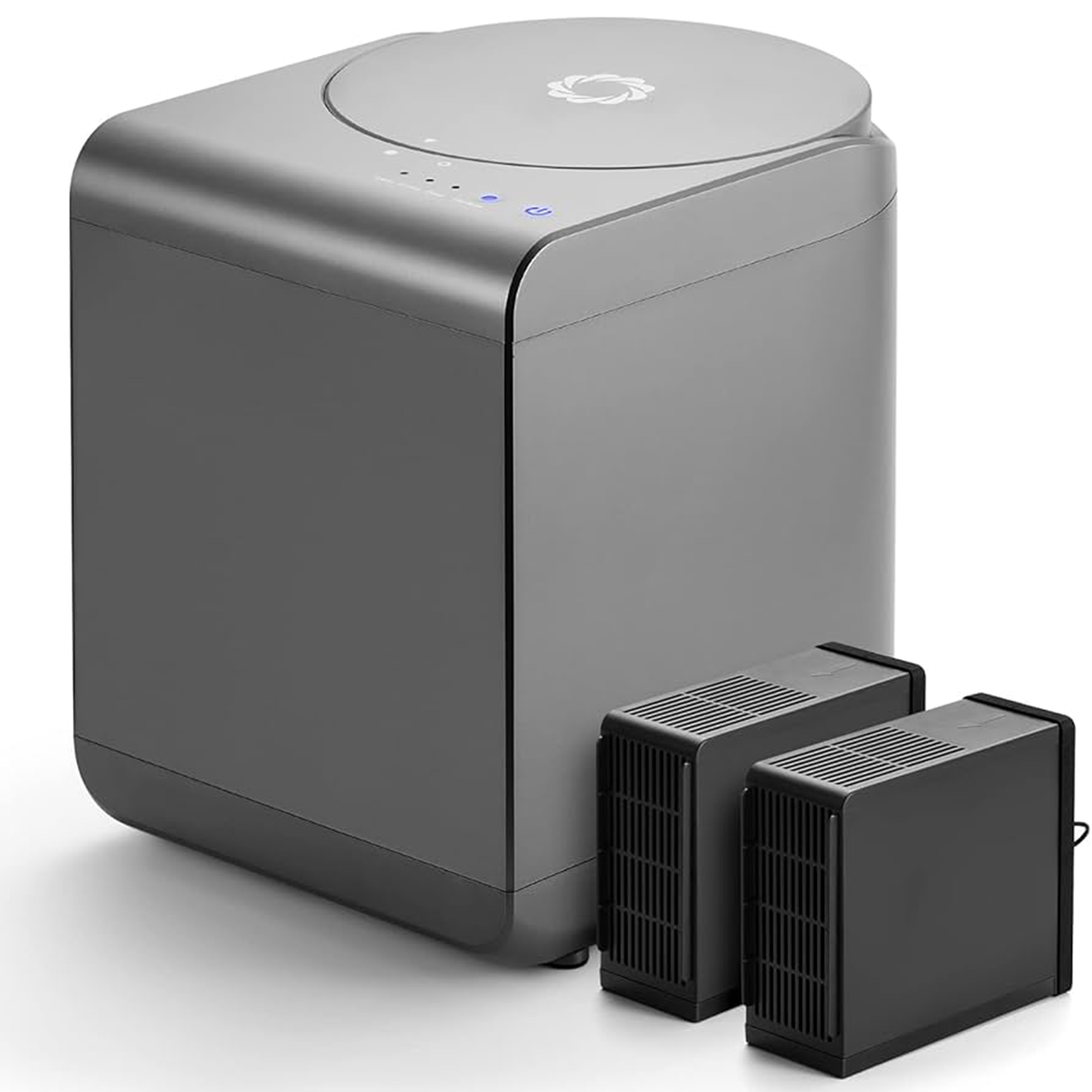
Cost: $349.99
Dimensions: H12.5xW10xD12.5 inches
Weight: 16.8lbs
Compost capacity: 2.5L
Noise level: Below 60dB
Filter cost: $29.99 for pack of 2 (last 3 months)
The Revive electric composter has a lot to offer with powerful blades and a fast run time of 2-7 hours. It's also smaller and lighter than most other brands. Upgrade to a clear lid if you want to see what's going on inside. The brand also sells a bacteria accelerator, which can be added to the ground food waste after it leaves the machine to speed up the composting process.
Pros
- Compact and lightweight
- Biodegradable filters can be composted
- Powerful blades break down a wide variety of food including small bones and soft shells
- Dishwasher-safe bucket
Cons
- Destroys beneficial bacteria
- Basic functionality

Cost: $999 or rent from $29.99 a month
Dimensions: H27.2xW16.6xD13.8 inches
Weight: 68lbs
Compost capacity: 6.5L
Noise level: 41dB
Filter cost: $80 or free with subscription (lasts 6-12 months)
The Mill food recycler is trash can-sized and designed to sit on the floor, with a foot pedal lid operation. It handles most food waste with ease, including small bones and avocado pits, and has a generous capacity, needing emptying once a month on average. A cycle takes 3-8 hours and can be scheduled via an app. If you don't want to commit, you can rent the bin, and Mill will even collect the food waste for an additional charge.
Pros
- Large capacity
- Handles wide range of food waste
- High-tech and sleek design
- Option to rent
Cons
- Expensive
- Big and heavy
- Does not nurture compost bacteria
How to Buy the Best Electric Composter
When choosing the best electric composter for your needs, there are various aspects to consider. Are you composting for a large family or just yourself? How quickly do you want to be able to use the compost in the garden? Are you prepared for ongoing running costs in terms of filter replacements and spare parts?
Sign up for the Gardening Know How newsletter today and receive a free copy of our e-book "How to Grow Delicious Tomatoes".
In this guide, we will explain the different appliance types and features to help you find an electric composter that suits your requirements and budget.
How Do Electric Composters Work?
Electric composters are designed to break down food waste and contribute to compost in the garden. They work by heating the waste to a high temperature – usually at least 160°F (71°C) – to destroy harmful bacteria and remove moisture.
The appliances also use a grinding or chopping mechanism to break down the food waste and move it around in the unit, aerating the waste and giving it a dry, loamy texture.
In the space of just a few hours, the process reduces the mass of the food waste by 70-90%. The resulting material does not produce a strong odor, which is also controlled through the use of a charcoal filter.
The end product may look like compost – or even sawdust depending on the appliances used and the food types processed. However, it is not yet compost…
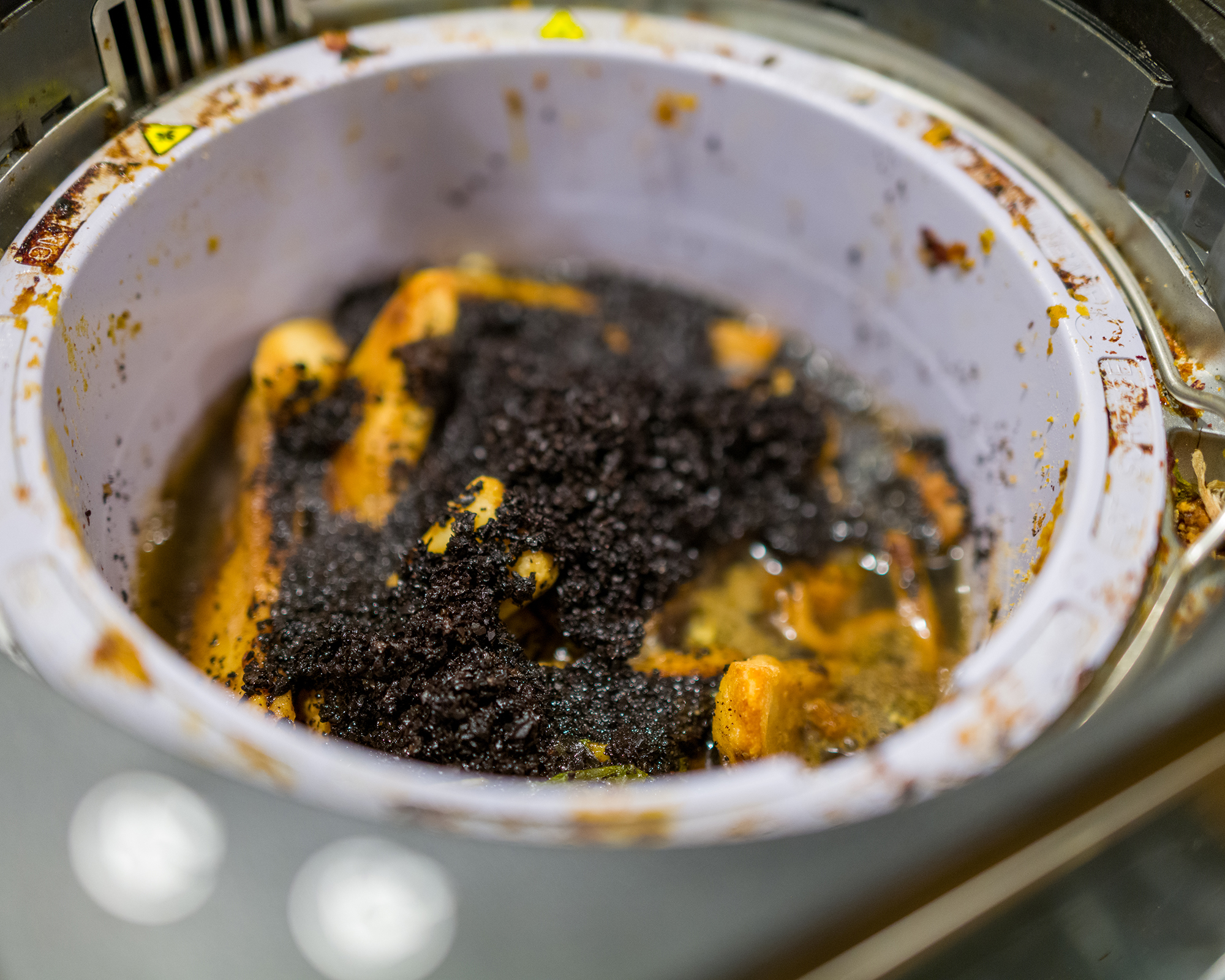
Electric Composter or Food Dehydrator?
When investing in an electric composter, it's important to understand that none of the machines produce finished compost that can be immediately used for planting in the garden. This is why some appliances are branded as "food recyclers", with the goal of reducing the levels of food waste going to landfill.
In nature, it takes many months for organic matter to decompose and become crumbly, fertile compost with a balanced nutrient profile that feeds plants and contributes to a loamy soil structure. Electric composters can't produce the same results in a few hours – but they can significantly speed up the process.
Using heat and movement, the appliances break down and dehydrate kitchen scraps to create food grounds. The downside of this process is that the heat treatment destroys beneficial compost bacteria in the process, which decompose the material and contribute to healthy soil. The waste material might look similar to compost, but it hasn't actually decomposed. It can be better described as "pre-compost".
If you simply add the pre-compost to plants, then it can attract mold, disrupt the nutrient balance in the soil, and add excess sodium. This is why most manufacturers advise a curing period before planting – or using it in soil in low concentration.
Some brands – most notably Reencle – have refined the electric composting process by adding resilient bacteria strains into the unit and processing the material over a longer period at a lower temperature. This allows the bacteria to remain active and speeds up the compost maturation process – though it still requires a short curing period.
How Long Until You Can Use the Compost?
A key consideration when choosing an electric composter is the time it takes for ground, dehydrated food waste to become usable, plantable compost.
On average, most pre-composts produced by electric composters need three months to mature before they are plantable. This can be achieved by adding the food grounds to an existing compost pile or mixing them with soil in an unplanted area of the garden.
If you want to be able to use your compost more quickly, then it can be mixed with soil at a ratio of 10:1 (soil to compost) and applied as mulch or top dressing.
Where bacteria are enabled to thrive in the process, as with Reencle, the plantable curing time is reduced to just three weeks, or immediately if used as mulch or top dressing.
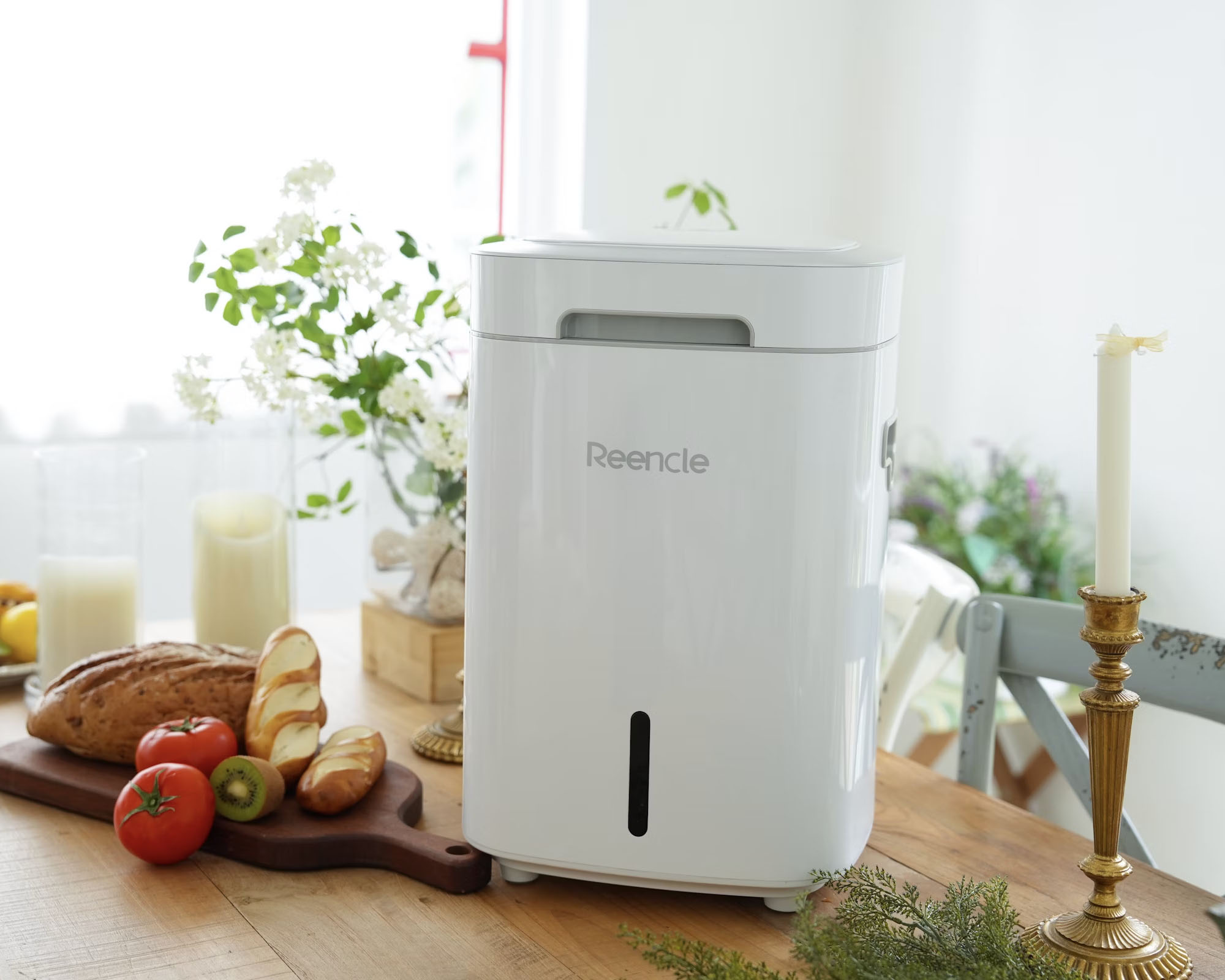
Size and Capacity
When thinking about composter size, don’t just consider the amount of food waste your household generates – consider how much space you have in your kitchen.
Some electric composters are trash can-sized, designed to sit on the floor, while others are compact enough to take pride of place on your countertop. Smaller units are ideal for individuals or small families, while larger models can accommodate higher volumes.
Electric composters can hold anything from 2-12 lbs, so it’s vital that you choose a design compatible with the amount of food waste your household produces.
What Can You Compost?
One of the advantages of electric composters is that the appliances are able to process a wider variety of waste types that wouldn't usually be added to a compost heap, such as meat, dairy, and even weeds.
Some composters are able to tackle tougher waste than others, such as small bones, shellfish shells and even avocado pits, while others are a little more restrictive about what can be composted. Check the manufacturer's guidelines before purchasing to ensure it is suitable for your needs.
Carbon Filter Replacement
When choosing an electric composter, it’s essential to consider the carbon filter lifecycle and the associated ongoing costs. Carbon filters play a critical role in reducing odors produced during the composting process, making your device suitable for indoor use. However, these filters are not permanent and require regular replacement to maintain their effectiveness.
The lifespan of carbon filters varies depending on the composter model and usage frequency. Some filters last as long as a year, while others may need replacing more frequently. Before purchasing, check the manufacturer’s recommendations for filter replacement intervals and the cost of replacements. Over time, these expenses can add up, potentially making one composter model more expensive to operate than another, even if the initial price is lower.
Evaluate the availability of replacement filters, as some brands may have limited supply or require ordering directly from the manufacturer.
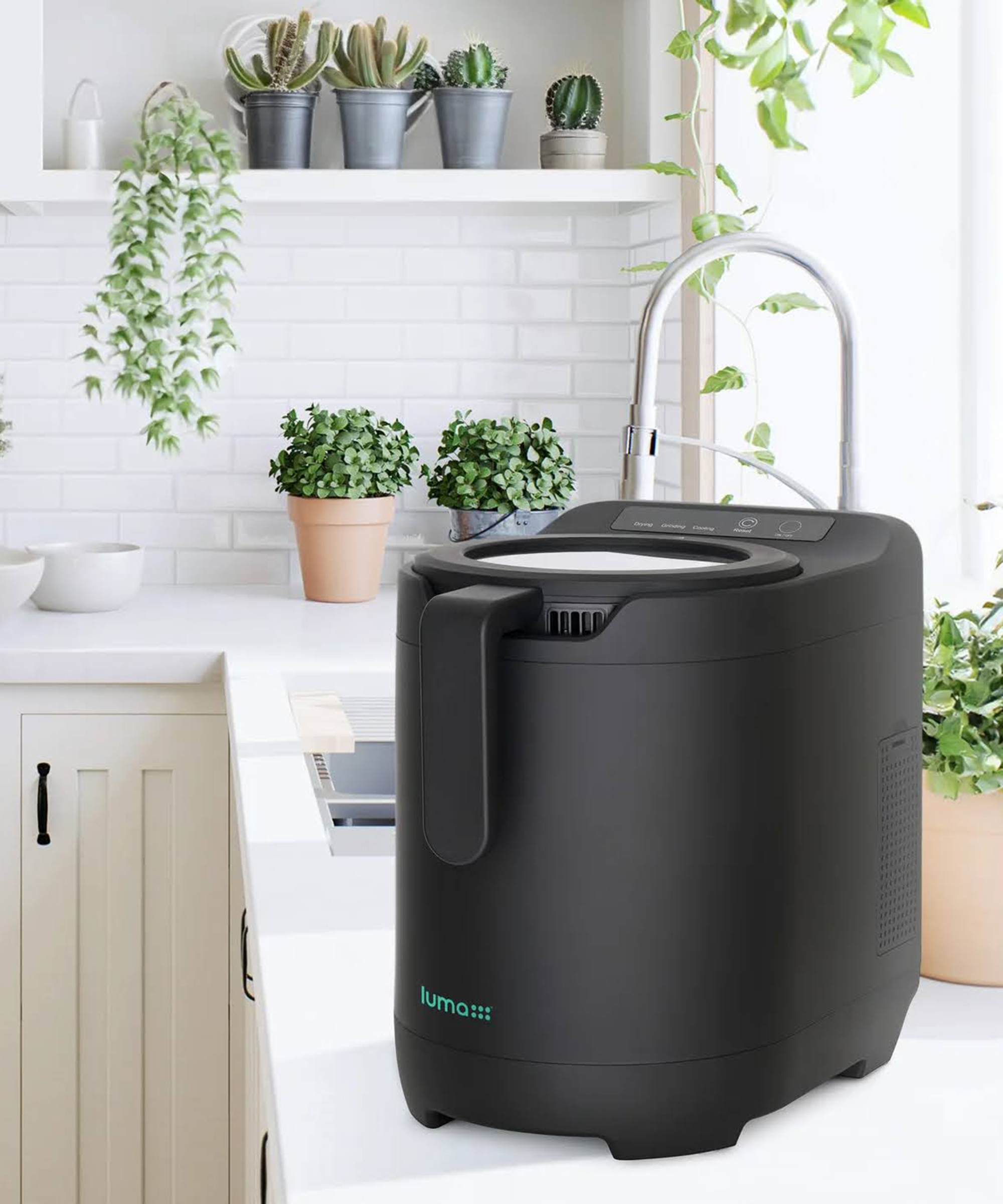
Noise Levels
Noise level is an important factor to consider if the composter will be used in a sociable kitchen or other living spaces. Different models operate at varying noise levels, depending on their size, technology, and mechanisms for breaking down food waste.
Electric composters with grinding or shredding features tend to be louder, as these components crush waste into smaller pieces. However, some premium models incorporate noise-reduction technology to minimize disturbance. Always check the manufacturer’s specifications for decibel levels, which can give you a clear idea of the noise impact. For reference, a noise level below 50 decibels is considered relatively quiet, equivalent to a moderate conversation.
Consider your household environment when evaluating noise. If your home has an open floor plan or if the composter will run overnight, a quieter model may be preferable. Frequent users might also prioritize low noise over speed or capacity.
Ongoing Maintenance
As with any appliance, ongoing maintenance is necessary to ensure optimal performance and longevity. While filters play a key role, other maintenance tasks are equally important.
Electric composters require regular cleaning to prevent clogs, unpleasant smells, and reduced performance. Most units feature removable buckets or chambers for easy cleaning, while some have cleaning programs. Look for models with dishwasher-safe buckets for the ultimate convenience.
If your composter has a grinding or shredding component, it may need an occasional clean and check. Food scraps – particularly fibrous, stringy waste – can sometimes get stuck, requiring manual removal. Some models also recommend occasional lubrication to keep the grinder running smoothly.
Aside from filters, certain parts like seals, grinding blades, or heating elements may wear out over time. Research the availability and cost of these replacements before committing to a specific model.
Energy Cost
Electric composters are designed to use minimal energy, with shorter cycles using about 1kW of power – at a cost of about 16.63 cents per cycle.
However, composters with longer cycles will cost slightly more to run. This is something to consider when choosing a model that operates at a longer period and lower temperature to preserve the bacteria in the compost.
For most users, however, the running cost is so low that it does not make much difference to energy bills.
Electric Composter Cost
Electric composters cost anything from $300 to over $1,000, with options to satisfy most budgets. However, you must weigh the upfront cost against long-term usage costs – such as replacement carbon filters, microbe pods, energy usage, and replacement parts.
This article features products available from third-party vendors on the Gardening Know How Shop.

Melanie is an experienced gardener and has worked in homes and gardens media for over 20 years. She previously served as Editor on Period Living magazine, and worked for Homes & Gardens, Gardening Etc, Real Homes, and Homebuilding & Renovating. Melanie has spent the last few years transforming her own garden, which is constantly evolving as a work in progress. She is also a passionate organic home grower, having experimented with almost every type of vegetable at some point. In her home, Melanie tends to an extensive houseplant collection and is particularly fond of orchids.